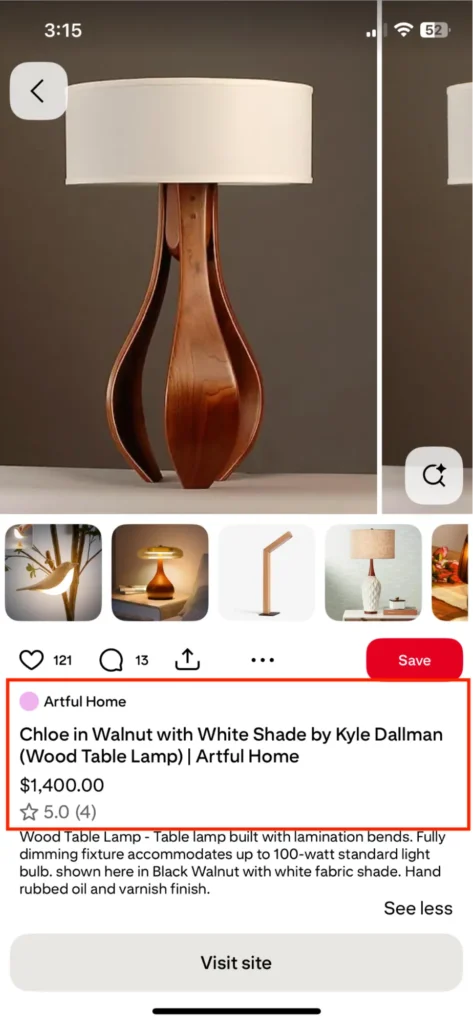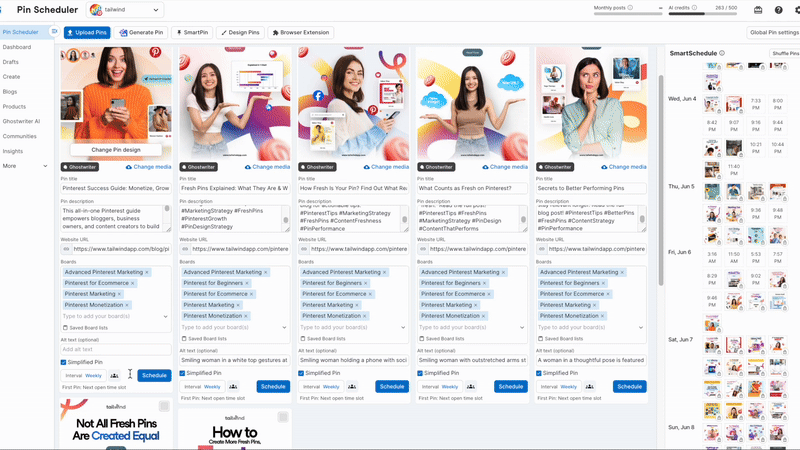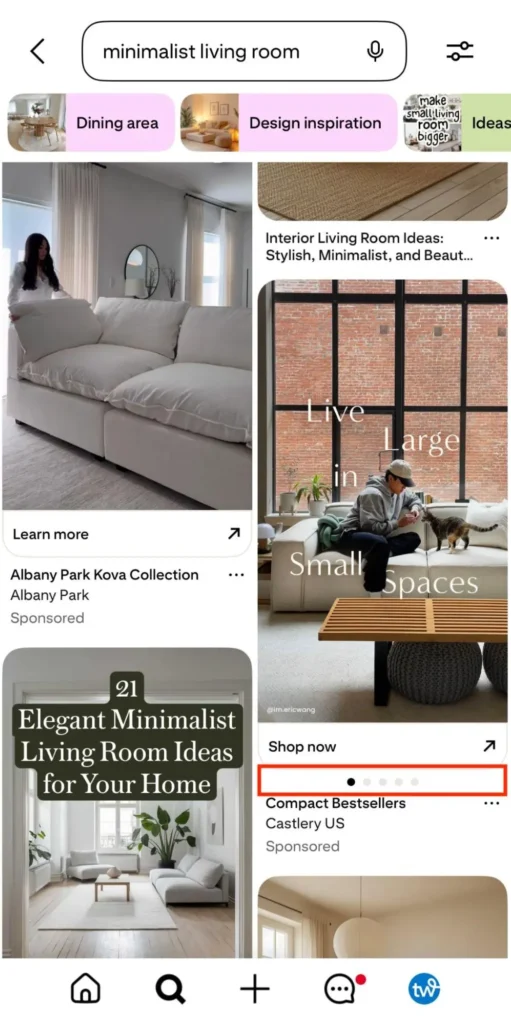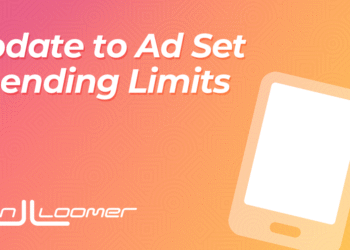
While other platforms focus on entertainment and connection, Pinterest users come with clear intent: to plan, discover, and buy. For e-commerce brands looking to expand product visibility in 2025 via Pinterest marketing, understanding how to leverage Pinterest’s unique ecosystem is absolutely critical for driving meaningful sales and long-term growth.
Why Pinterest is Built for E-Commerce
Pinterest operates fundamentally differently from traditional social media platforms. It’s an intent-rich discovery platform where 85% of users have made a purchase based on Pins they’ve seen from brands, making it a goldmine for e-commerce businesses ready to tap into this shopping-focused audience.
The Pinterest advantage over other platforms:
High-Value Demographics: One in three Pinterest shoppers earns over $100,000 annually, and they’re 27% more likely to buy premium products compared to users on other platforms. This makes Pinterest particularly valuable for brands selling higher-margin products.
Unbranded Discovery: 97% of top Pinterest searches are unbranded, meaning people search for “black leather boots” rather than “Nike boots.” This creates massive opportunities for product discovery since users aren’t loyal to specific brands — they’re open to finding new ones.
Long-Term Traffic Potential: Unlike Instagram or TikTok where content disappears within hours, Pinterest content continues driving traffic for years. Over 60% of Saves come from Pins over a year old, making your Pinterest marketing efforts compound over time.

Direct Link-Outs Allowed: While other platforms restrict external links, Pinterest encourages them. Every Pin can drive traffic directly to your product pages, making the path from discovery to purchase seamless.
Shopping Pins: If you have Rich Pins enabled on your site, your product Pins will include additional information like price and availability.

How to Boost Product Discovery on Pinterest
Use Fresh Pins for Every Product Angle
The biggest game-changer for e-commerce success on Pinterest is understanding Fresh Pins. Over 90% of traffic to e-commerce websites comes from Creates (Fresh Pins) rather than Saves. This means creating new Pins — not re-saving old ones — is essential for maximum visibility.
Strategic Fresh Pin approach for products:
- Create separate Pins for different product angles: flat lay, lifestyle shots, in-use photos
- Show your product in various contexts: seasonal styling, different room settings, multiple color options
- Use different titles and descriptions for each Pin to target different search terms
- Space out Fresh Pins over time rather than posting them all at once
Key insight: Each new image creates a new opportunity for distribution. Don’t just upload one product photo and call it done. One product should generate 10-12 different Pins over several months, each optimized for different keywords and contexts.
Pro Tip:
Fuel your Pinterest marketing by creating a brand new Tailwind SmartPin for each new product you list. Smart Pin will automatically create a new Pin for that URL every week. All you have to do is approve and schedule.

Create Search-Friendly Descriptions
Pinterest functions more like Google than Instagram, so your Pin descriptions need to work as mini product listings optimized for search.
E-commerce description best practices:
- Include primary product keywords in the first line (what Pinterest shows in feeds)
- Mention specific details: colors, materials, sizes, styles, use cases
- Add qualifying keywords: “handmade,” “eco-friendly,” “budget-friendly,” “gift idea”
- Include seasonal or occasion-based terms when relevant
- Keep descriptions focused. The most viral Pins average 220-232 characters.
Example for a ceramic mug: “Handmade ceramic coffee mug in sage green. Perfect for morning coffee rituals or gift giving. Microwave and dishwasher safe. Modern farmhouse kitchen decor.”
Rather than generic descriptions, treat each Pin like a mini product listing that helps both Pinterest and users understand exactly what you’re selling.
Pin to Intent-Aligned Boards
Your board strategy directly impacts product discoverability. Instead of organizing boards around your brand categories, organize them around customer intent and search behavior.
Intent-driven board examples:
- “Cozy Fall Outfits” instead of “Women’s Clothing”
- “Small Space Storage Solutions” instead of “Home Organization”
- “Gifts for Dog Lovers” instead of “Pet Products”
- “Budget-Friendly Kitchen Upgrades” instead of “Kitchen Items”
This approach aligns your products with what shoppers are actually searching for, increasing the likelihood your Pins appear in relevant search results and recommendations.
E-Commerce Pin Formats That Perform in 2025
Standard Pins
Standard Pins remain the most effective format for e-commerce, with 89% of the most viral Pins being Image Pins. They’re perfect for product close-ups, lifestyle imagery, and styled product shots.
Best practices for standard product Pins:
- Use vertical images (2:3 aspect ratio) for maximum visibility
- Ensure high image quality — poor photography can hurt performance
- Include lifestyle context when possible (product in use vs. just product alone)
- Add subtle text overlay for key product benefits if helpful
Carousel Pins
Carousel Pins excel at showcasing product features, variations, or styling options. They’re particularly effective for fashion, home decor, and any products with multiple uses or variations.
Effective carousel strategies:
- “Swipe to shop the look” featuring multiple coordinated products
- Before/after transformations showing product benefits
- Color or style variations of the same product
- Step-by-step styling or usage instructions

Video Pins (Strategic Use)
Video Pins work best for products that benefit from motion: demonstrations, tutorials, or transformation content. They’re particularly effective for beauty products, home improvement items, and fitness gear.
When to use video Pins:
- Product demonstrations (how makeup applies, how tools work)
- Before/after transformations
- Unboxing or packaging reveals
- Products in motion (clothing movement, home decor styling)
Keep videos vertical and under 15 seconds for optimal performance.
Pinterest Shopping Features to Leverage
Product Rich Pins
Product Rich Pins automatically sync your product information (price, availability, and title) directly to your Pins. This creates a seamless shopping experience and provides crucial product details at a glance.
Rich Pins benefits for e-commerce:
- Display real-time pricing and stock status
- Include direct links to product pages
- Increase click-through rates with detailed product info
- Work with Shopify, WooCommerce, or manual setup
Rich Pins make your products look more professional and trustworthy, which can significantly impact conversion rates.
Pinterest Catalogs
Pinterest Catalogs allow you to upload your entire product feed to create shoppable Pins at scale.
Catalog advantages:
- Automatically create Pins for your entire inventory
- Enable dynamic product ads
- Keep pricing and availability updated automatically
- Scale your Pinterest presence without manual Pin creation
Catalogs work particularly well when combined with a Fresh Pin strategy: use Catalogs for broad visibility and Fresh Pins for targeted, high-intent keywords.
Shop Tab on Pinterest Profile
Your Pinterest Shop tab serves as a curated storefront within Pinterest. Organize it strategically by collection, season, or product type to make browsing easy for high-intent shoppers.
Shop tab optimization:
- Organize by customer journey: “New Arrivals,” “Best Sellers,” “Sale Items”
- Create seasonal collections that align with search trends
- Feature your highest-margin or most popular products prominently
- Update regularly to keep content fresh and relevant
Tailwind Tools for Product Discovery on Pinterest
SmartSchedule: Gets your product Pins in front of your audience when they’re most active and ready to shop. Rather than guessing optimal posting times, SmartSchedule analyzes your specific audience behavior.
Browser Extension: Pulls product content directly from your website to create Fresh Pins efficiently. Use it to transform your existing product photos into Pinterest-optimized content without starting from scratch.
Pin Designer: Speed up Fresh Pin creation for every product variation. Create multiple Pins for the same product quickly while maintaining design consistency.
For comprehensive Pinterest marketing strategy and scheduling, explore Tailwind’s Pinterest scheduling and publishing features.
Final Tips for Selling on Pinterest in 2025
Consistency Beats Frequency: Show up weekly with new product content rather than posting sporadically. Pinterest rewards consistent publishing with better long-term distribution.
Follow Seasonal Trends: Plan your product content around seasonal shopping patterns. Start promoting holiday gifts in September, spring products in January, and back-to-school items in June.
Pin Early: Plan at least 30-45 days ahead for seasonal content. Pinterest users plan purchases well in advance, so your timing needs to match their planning cycle.
Think Beyond Brand Boards: Pin your products to boards that reflect customer interests and search behavior, not just your brand categories. A candle company should pin to “Cozy Reading Nooks” and “Self-Care Sunday” boards, not just “Our Products.”
Focus on Intent: Your content should serve their planning and discovery process, not just showcase your products.
FAQ
How often should I create Fresh Pins for the same product?
Create 10-12 Fresh Pins per product over several months, each with different images, angles, and keyword focuses. Space them out every 2-4 weeks rather than posting all at once.
Should I use my brand colors in Pinterest product photos?
Focus on what performs rather than strict brand consistency. Pinterest research shows only 4% of viral designed Pins used brand color palettes. Prioritize colors that complement the colors in your product images and appeal to Pinterest users.
How do I know if Pinterest is worth it for my specific products?
Pinterest works especially well for Fashion, Decor, Beauty, DIY, Food, and lifestyle products. If your target market includes women aged 25-34 with higher disposable income, Pinterest likely offers strong potential.
What’s the difference between Pinterest Catalogs and creating individual Pins?
Catalogs provide broad visibility and automate Pin creation at scale, while individual Fresh Pins allow for targeted keyword optimization and specific audience targeting. Use both together for maximum impact.
How long does it take to see results from Pinterest marketing?
Pinterest content builds momentum over time. While some Pins may get traction within weeks, the platform’s real power lies in long-term compound growth. Many top-performing Pins reach peak engagement 1-2 years after creation.
Do I need professional product photography for Pinterest success?
High-quality images perform better, but you don’t need professional photography for every Pin. Strong smartphone photography with good lighting, combined with design tools like Tailwind Create, can produce effective results.

The post Pinterest for E-Commerce: Boost Product Discovery appeared first on Tailwind Blog.












